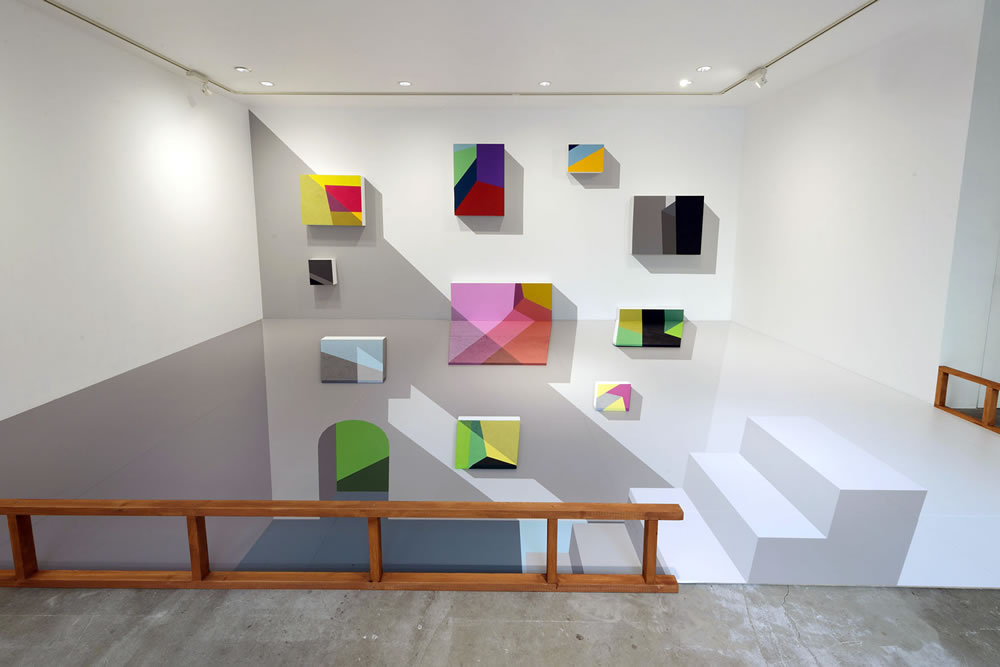Iku Harada is a painter who does landscapes configured with simple shapes and bright colors. The motif of this piece is a virtual island landscape that does not actually exist but was created by 3D modeling software. 2019 marked the 10th anniversary since she started creating the island. An exhibition was held on April 13 to July 7, 2019, at an open studio at the Fuchu Art Museum in Tokyo to show her works to the public. It was a rare opportunity for viewers to see her production process. Through her open studio production, this column tries to explore Harada’s creative world and relationships with the actual world through her works.
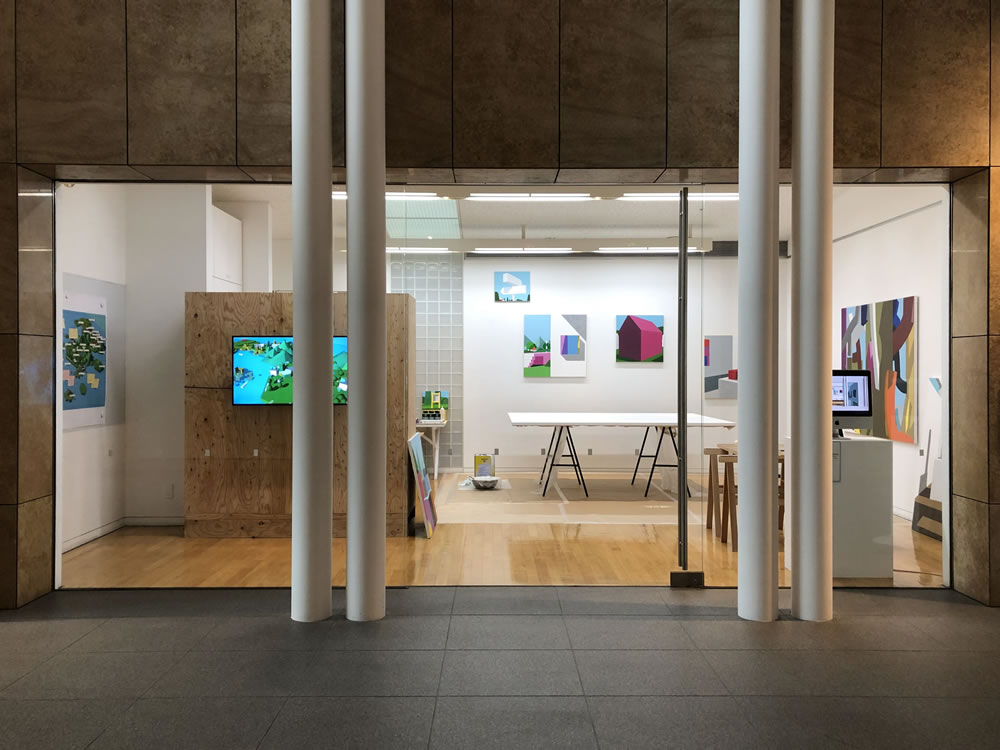 Iku Harada: Another World Map of 10th Year (A scene from the second week after the open studio started)
Iku Harada: Another World Map of 10th Year (A scene from the second week after the open studio started)
Photo: Yasunori Tanioka
Photo courtesy: Fuchu Art Museum
Drawing virtual island landscapes
Looking into the open studio through its glass wall, a work on a large canvas that hung on the back wall caught my eye. Old and new works were displayed side by side on the wall. A work table was on the floor that was covered with a protective sheet. Artists’ materials were on the table. It was obviously a painter’s open studio. However, once I see the items placed in front of the paintings, it looks different.
There was a laptop, which I suppose the artist uses every day, and a large monitor in the front space separated by the wall. The computer displayed a screen of a 3D modeling program, while a video of a small island floating in the sea created with the software played repeatedly on the monitor.
The video on display was “inner space,” a virtual island for creating works that Harada started developing in 2008. Including the items in progress during the open studio, Harada’s works are depicted landscapes that she viewed where she placed on the “virtual island.”
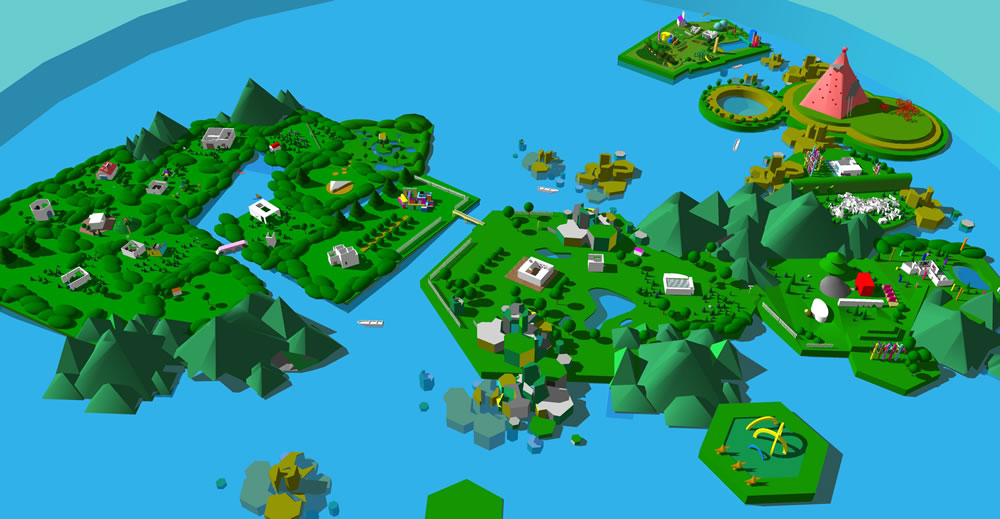 “inner space” (detailed) update 2019.07 © Iku Harada
“inner space” (detailed) update 2019.07 © Iku Harada
Islands to keep creating works
The “inner space” created by computer graphics conjure the world of video games, however, nothing happens on the island, and none of characters being there. It appears only when Harada activates the program, evolving as long as she manipulates it. It is somewhat like a miniature landscape garden for the creator. Harada started creating the islands with the commitment to continue their evolution for at least 10 years. That’s her strong determination to continue her creation based on a single concept at the same time.
At the starting stage, Harada began placing simply shaped objects on a small island, at a much smaller scale than the current one. Then, she became accustomed to using the software and created buildings and signs. Things were not reduced but increased. The islands have been gradually growing. On the evolving island, if she places her viewpoint on the same place as what she has done in the past, new elements will be viewed. She cannot see the same landscape anymore. She adds new elements in the “inner space” and continues drawing the landscape that can be seen somewhere from the islands. This creating style is somewhat like a solo game.
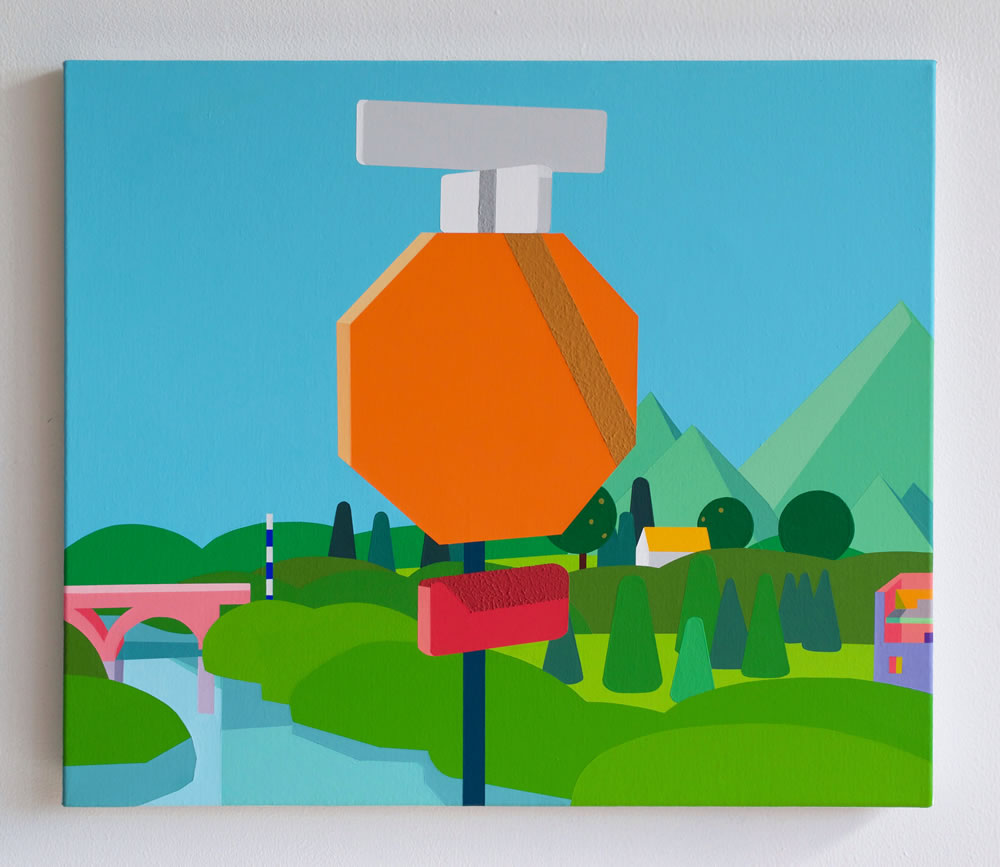 SIGN (in the daytime) 455×530mm / Acrylic on canvas / 2018
SIGN (in the daytime) 455×530mm / Acrylic on canvas / 2018
Photo courtesy: Iku Harada
Islands to accept and connect things
However, Harada is not merely working alone with the miniature landscape garden. Following the Great East Japan Earthquake, she faced the big question of what art can do, as many other artists did. That thought occurred a few years after she first created “inner space.”
In “inner space,” there are galleries and buildings that resulted from requests and collaborations. When Harada exhibits at an actual gallery, she creates the same space in the “inner space” and holds virtual exhibitions there. Moreover, she presents a work she created with her viewpoint in the virtual gallery to produce a nesting structure. The viewers who see the actual exhibit may sense something strange on the spot where they stand and what they see.
Harada, who has a way to connect between her “inner space” and the real world, is proactive toward commission works. On the virtual islands, there is a building named “factory of so and so’s paint company” build on the request of a paint company. Using the virtual island as a bridge, she says she can handle such commission works with the same attitude with her own work. The way her work connects the world of her work with the real world was born through a major earthquake, which made her aware of what she could do with society.
The open studio venue at the Fuchu City Museum also added the islands during the exhibition period. The scene I saw at the venue was actually the work “OPEN STUDIO (in the Neo Fuchu Park) #001” seen from the open studio, which was created in “inner space.”
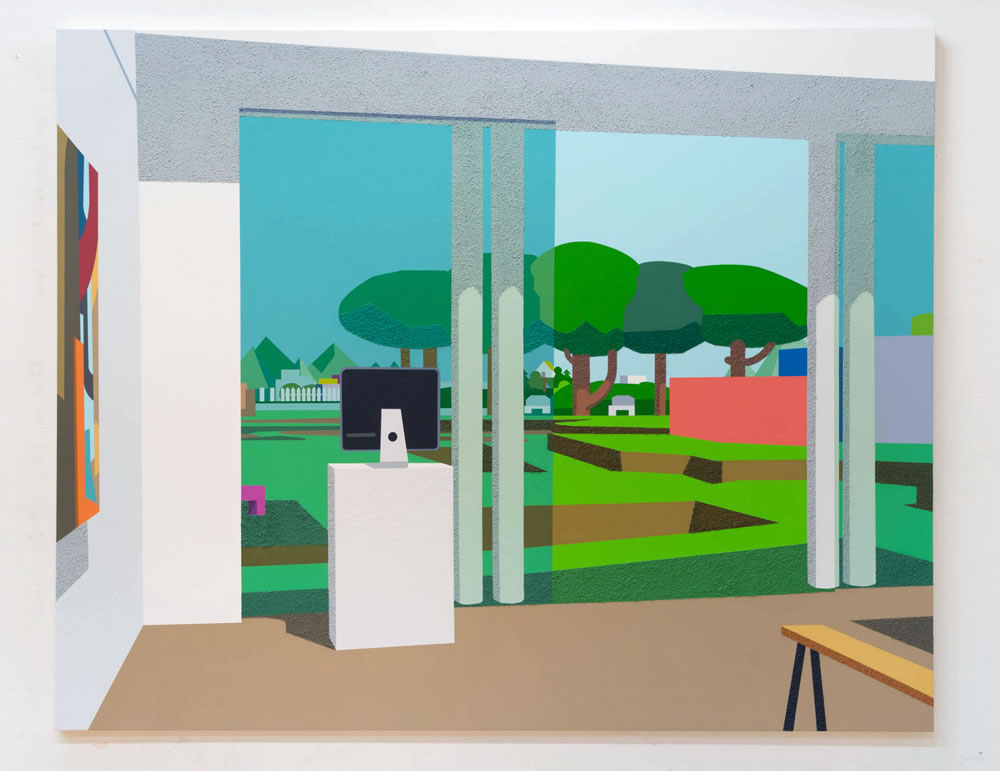 ”OPEN STUDIO (in the Neo Fuchu Park) #001”
”OPEN STUDIO (in the Neo Fuchu Park) #001”
1,818×2,273mm / Acrylic on canvas / 2019
Photo: Yasunori Tanioka
Photo courtesy: the Fuchu Art Museum
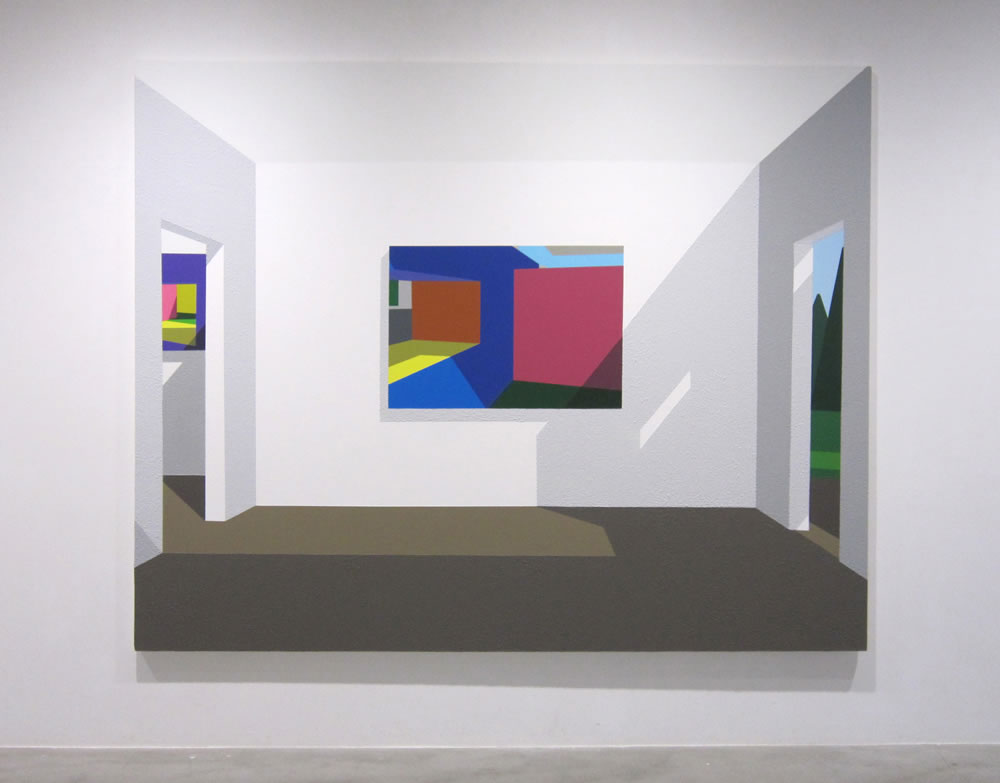 “HOME - WHITE CUBE #001” 1,820×2,270mm / Acrylic on canvas / 2011
“HOME - WHITE CUBE #001” 1,820×2,270mm / Acrylic on canvas / 2011
Photo courtesy: Iku Harada
Developing in various ways, continue to expanding islands
A gallery is located in the center of “inner space.” It is an actual gallery (the Art Front Gallery in Shibuya-ku, Tokyo). Harada held a solo exhibition there in 2018 and showed both a gallery in virtual reality and an exhibition in the real gallery. In the actual exhibition room, the shadows the work produced on the wall were unnatural, depending on the viewing angle. The canvas (actually made of polystyrene board) may break in the middle and cover the wall to the floor. The gallery space created in the virtual “inner space” can be seen through a lens only from one certain point where the viewer positions a camera. Harada has developed her work medium with the help of viewers. She also employed the technique of 3D trick art.
The viewers take photos at the gallery and post them on social media, such as Instagram. Then, the same scenarios as in the exhibition’s “inner space,” which cannot be entered, are distributed boundlessly through social media. Viewers see the virtual exhibition on a smartphone screen in the real-world exhibition space, and they remotely view photos posted on social media. The actual exhibition room is not exactly the same as in the photograph when viewed with the naked eye. What does viewing a work mean? That was a question from Harada, who traverses real and virtual worlds.
She has been participating in Yoro Tenmei Hanten Augmented Reality (based in Yoro, Gifu Prefecture) as a research member to visualize unbuilt part of the project. Her work has been expanding after a 10-year experience with her “inner space” of virtual islands.
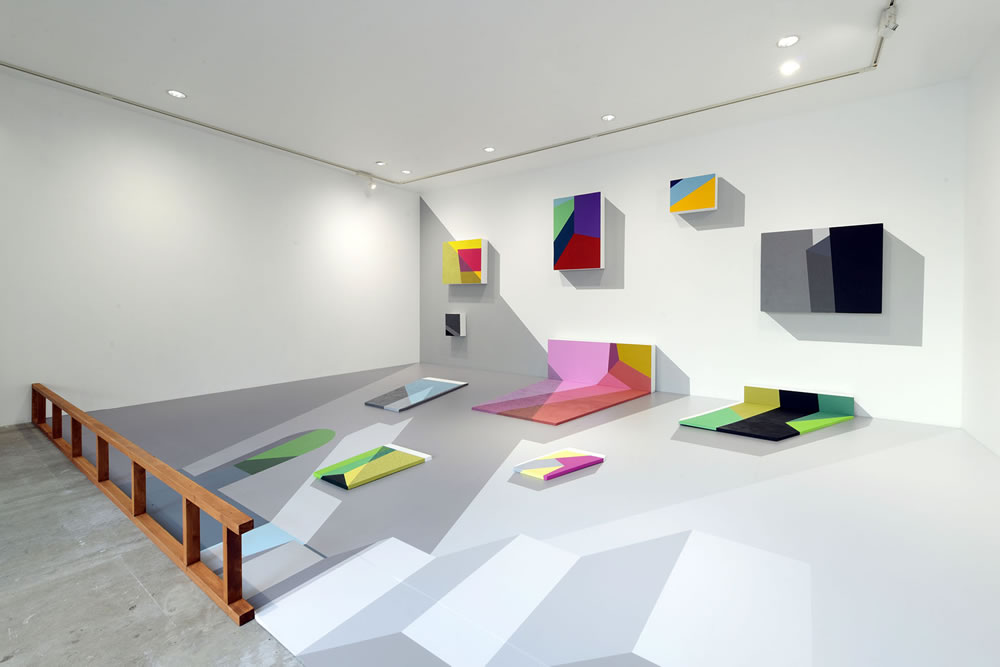 The installation view of the work entitled “WHITE CUBE- WHITE CUBE 2018”
The installation view of the work entitled “WHITE CUBE- WHITE CUBE 2018”
Polystyrene board, Acrylic paint, Inkjet print / 2018
Photo: Hiroshi Noguchi
Photo courtesy: Iku Harada
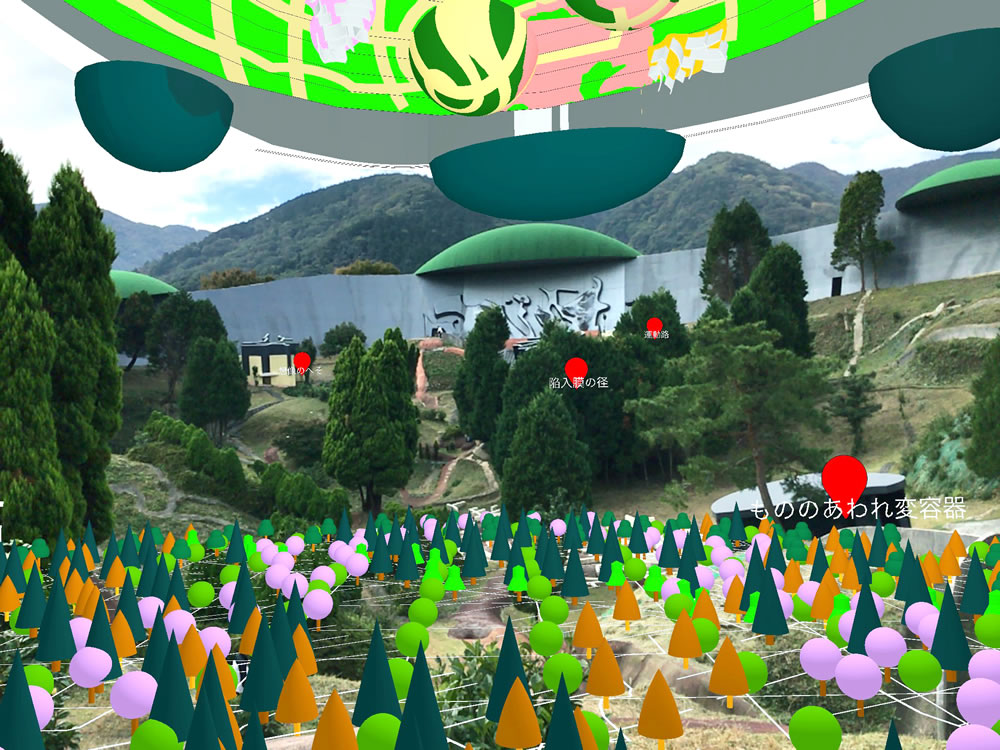 “Yoro Tenmei Hanten Augmented Reality” Project/Production: “Reality Arts” research team / 2018
“Yoro Tenmei Hanten Augmented Reality” Project/Production: “Reality Arts” research team / 2018
Reference site: https://www.youtube.com/watch?v=XJ8ZDQxBQZ0
Photo courtesy: Iku Harada
(information)
Open Studio 75 Iku Harada [Another World Map of 10th Year]
Exhibition Period: Saturday, April 13-Sunday, July 7, 2019
Venue: Fuchu Art Museum Open Studio
https://www.city.fuchu.tokyo.jp/art/kokai/kokaiitiran/75haradaiku.html (in Japanese)
*URL links were confirmed on May 8, 2020.












